
The Abbey Church of Saint Peter and Saint Paul, commonly known as Bath Abbey, is a parish church of the Church of England and former Benedictine monastery in Bath, Somerset, England. Founded in the 7th century, it was reorganised in the 10th century and rebuilt in the 12th and 16th centuries; major restoration work was carried out by Sir George Gilbert Scott in the 1860s. It is one of the largest examples of Perpendicular Gothic architecture in the West Country. The medieval abbey church served as a sometime cathedral of a bishop. After long contention between churchmen in Bath and Wells the seat of the Diocese of Bath and Wells was later consolidated at Wells Cathedral. The Benedictine community was dissolved in 1539 during the Dissolution of the Monasteries.
Athelm was an English churchman, who was the first Bishop of Wells, and later Archbishop of Canterbury. His translation, or moving from one bishopric to another, was a precedent for later translations of ecclesiastics, because prior to this time period such movements were considered illegal. While archbishop, Athelm crowned King Æthelstan, and perhaps wrote the coronation service for the event. An older relative of Dunstan, a later Archbishop of Canterbury, Athelm helped promote Dunstan's early career. After Athelm's death, he was considered a saint.

Glastonbury Abbey was a monastery in Glastonbury, Somerset, England. Its ruins, a grade I listed building and scheduled ancient monument, are open as a visitor attraction.

The Diocese of Clifton is a Latin Church diocese of the Catholic Church centred at the Cathedral Church of Saints Peter and Paul in Clifton, England.
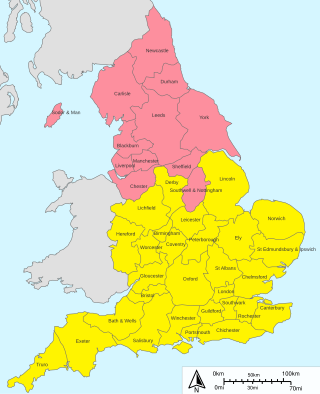
This article traces the historical development of the dioceses and cathedrals of the Church of England. It is customary in England to name each diocese after the city where its cathedral is located. Occasionally, when the bishop's seat has been moved from one city to another, the diocese may retain both names, for example Bath and Wells. More recently, where a cathedral is in a small or little-known town or city, the diocesan name has been changed to include the name of a nearby larger city: thus the cathedral in Southwell now serves the diocese of Southwell and Nottingham, and Ripon Cathedral was in Ripon and Leeds from 1999 until 2014. Cathedrals, like other churches, are dedicated to a particular saint or holy object, or Christ himself, but are commonly referred to by the name of the city where they stand. A cathedral is, simply, the church where the bishop has his chair or "cathedra".
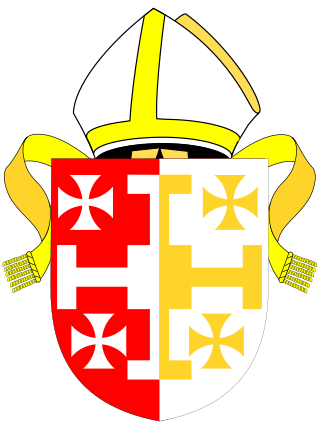
The Diocese of Lichfield is a Church of England diocese in the Province of Canterbury, England. The bishop's seat is located in the Cathedral Church of the Blessed Virgin Mary and Saint Chad in the city of Lichfield. The diocese covers 4,516 km2 (1,744 sq mi) of several counties: almost all of Staffordshire, northern Shropshire, a significant portion of the West Midlands, and very small portions of Warwickshire and Powys (Wales).

The Diocese of St Albans forms part of the Province of Canterbury in England and is part of the wider Church of England, in turn part of the worldwide Anglican Communion.
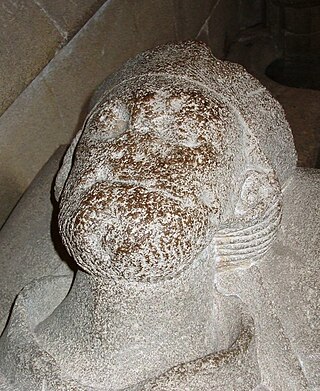
Gisa was Bishop of Wells from 1060 to 1088. A native of Lorraine, Gisa came to England as a chaplain to King Edward the Confessor. After his appointment to Wells, he travelled to Rome rather than be consecrated by Stigand, the Archbishop of Canterbury. As bishop, Gisa added buildings to his cathedral, introduced new saints to his diocese, and instituted the office of archdeacon in his diocese. After the Norman Conquest, Gisa took part in the consecration of Lanfranc, the new Archbishop of Canterbury, and attended Lanfranc's church councils. His tomb in Wells Cathedral was opened in the 20th century and a cross was discovered in his tomb.

The Bishop of Bath and Wells heads the Church of England Diocese of Bath and Wells in the Province of Canterbury in England.

The Diocese of Coventry is a Church of England diocese in the Province of Canterbury. It is headed by the Bishop of Coventry, who sits at Coventry Cathedral in Coventry, and is assisted by one suffragan bishop, the Bishop of Warwick. The diocese covers Coventry and Warwickshire.
Jocelin of Wells was a medieval Bishop of Bath. He was the brother of Hugh de Wells, who became Bishop of Lincoln. Jocelin became a canon of Wells Cathedral before 1200, and was elected bishop in 1206. During King John of England's dispute with Pope Innocent III, Jocelin at first remained with the king, but after the excommunication of John in late 1209, Jocelin went into exile. He returned to England in 1213, and was mentioned in Magna Carta in 1215.
Savaric fitzGeldewin was an Englishman who became Bishop of Bath and Glastonbury in England. Related to his predecessor as well as to Emperor Henry VI, he was elected bishop on the insistence of his predecessor, who urged his election on the cathedral chapter of Bath. While bishop, Savaric spent many years attempting to annexe Glastonbury Abbey as part of his bishopric. Savaric also worked to secure the release of King Richard I of England from captivity, when the king was held by Emperor Henry VI.
John of Tours or John de Villula (died 1122) was a medieval Bishop of Wells in England who moved the diocese seat to Bath. He was a native of Tours and was King William I of England's doctor before becoming a bishop. After his consecration as bishop, he was either given or purchased Bath Abbey, a rich monastery, and then moved the headquarters of the diocese from Wells, to the abbey. He rebuilt the church at Bath, building a large cathedral that no longer survives. He gave a large library to his cathedral and received the right to hold a fair in Bath. Not noted for his scholarship, he died suddenly in 1122.
William of Bitton was a medieval English Bishop of Bath and Wells.
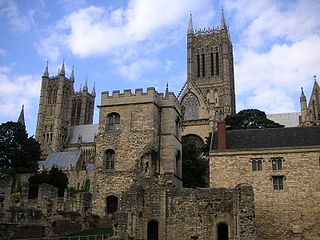
Hugh of Wells was a medieval Bishop of Lincoln. He began his career in the diocese of Bath, where he served two successive bishops, before joining royal service under King John of England. He served in the royal administration until 1209, when he was elected to the see, or bishopric, of Lincoln. When John was excommunicated by Pope Innocent III in November 1209, Hugh went into exile in France, where he remained until 1213.
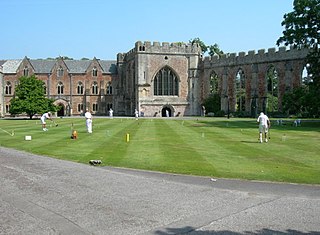
The Bishop's Palace is the residence of the bishop of Bath and Wells in Wells, Somerset, England. The palace is adjacent to Wells Cathedral and has been the residence of the bishops since the early thirteenth century. It has been designated a grade I listed building.
The Archdeacon of Taunton has been, since the twelfth century, the senior ecclesiastical officer in charge of the archdeaconry of Taunton in the Diocese of Bath and Wells. The archdeaconry includes seven deaneries.

William of Wrotham or William de Wrotham was a medieval English royal administrator and clergyman. Although a late 13th-century source says that William held a royal office under King Henry II of England, the first contemporary reference to William is in 1197, when he became responsible for, among other things, the royal tin mines. He also held ecclesiastical office, eventually becoming Archdeacon of Taunton, and served King John of England as an administrator of ecclesiastical lands and a collector of taxes.

The Bishop of Bristol heads the Church of England Diocese of Bristol in the Province of Canterbury, in England.

Holy Trinity Church is a former Church of England church in Godney, Somerset, England. Designed by George Phillips Manners, it was built in 1839–41 and made redundant in 1999. The church is now used for civil weddings and events as the Glastonbury Weddings and Events Venue. It is a Grade II listed building.
















